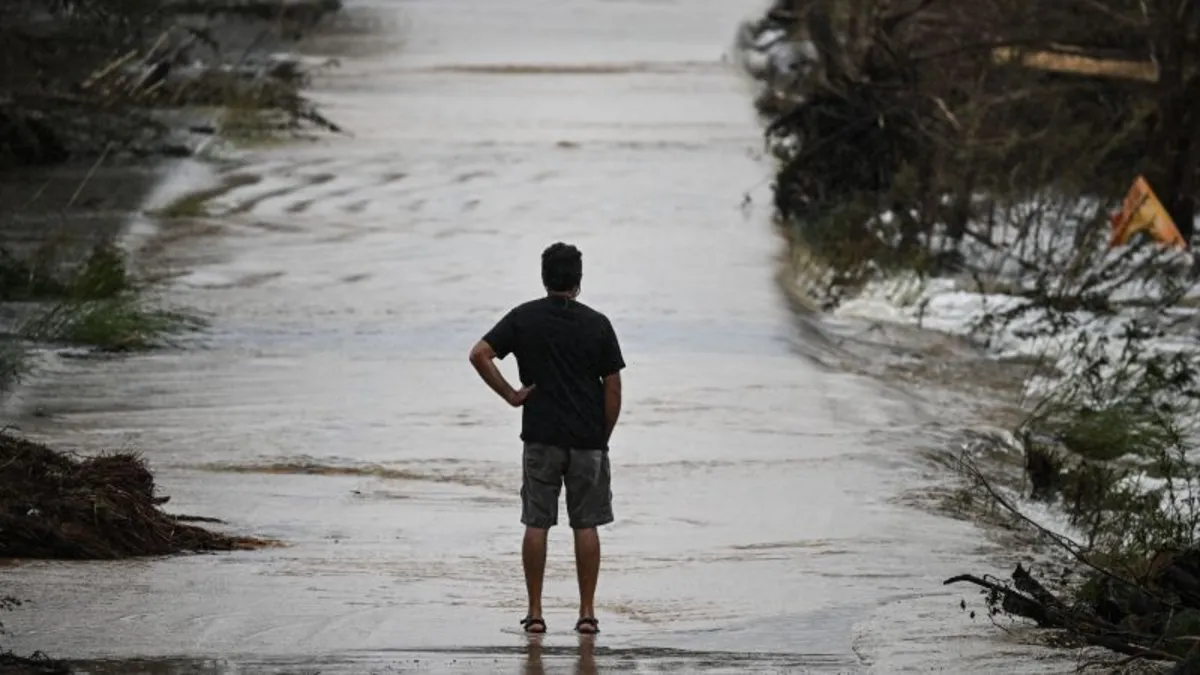
Once considered a time for leisure and relaxation, summer has increasingly morphed into a season characterized by anxiety and disruption. The growing impact of fossil fuel pollution and other compounding factors has turned these warmer months into a perilous time, marked by relentless heat waves, devastating wildfires, and catastrophic flooding. This summer, in particular, has seen a tragic surge in deadly flash floods across the United States, highlighting the escalating volatility of our warming world.
Climate scientists assert that the current weather patterns are not coincidental; this is indeed the summer of flooding. Dramatic weather events, including 100-year to 1,000-year deluges, have occurred nearly simultaneously across multiple states. Large swaths of the US have experienced an unusually humid summer, with record moisture levels saturating the air. When cold fronts and other weather systems encounter this moisture, it can be released in concentrated, often highly localized downpours.
According to Daniel Swain, a climate researcher at UCLA, the atmospheric conditions have been funnelling humid air north from the unusually warm Gulf and western Atlantic, including the Gulf Stream. This phenomenon has resulted in unprecedented levels of moisture throughout the atmosphere across the US east of the Rockies. Consequently, meteorologists have recorded record levels of what is known as precipitable water, which measures the potential rainfall that could occur if all the water vapor in the air were suddenly condensed.
The summer has been punctuated by a series of catastrophic flash floods. One of the most devastating incidents occurred in Texas on the night of July 4, where more than 130 lives were lost. Flash flood events have also struck elsewhere; for instance, three individuals perished in New Mexico due to torrential rains on a wildfire burn scar on July 8. In Chicago, a 1,000-year rainfall event submerged major roads in early July, while North Carolina faced deadly flooding from the remnants of Tropical Storm Chantal around the same time. New York City experienced its second-heaviest rainfall in one hour on July 14, resulting in significant flash flooding that lasted through the next day. Just recently, Kansas City was also hit by severe flooding on July 17.
These floods have roots in rainfall amounts that statistically have a return frequency of about 1,000 years, indicating only a 0.1% chance of occurring in any given year. However, climate change is shifting this probability, increasing the likelihood of extreme precipitation events. Michael Mann, a climate scientist at the University of Pennsylvania, explains that when discussing “1,000-year” events, we are considering their frequency in the absence of human-caused warming. “These events are much more frequent because of human-caused warming,” he stated in an email.
Moreover, Mann's research highlights the influence of persistent large-scale weather patterns, known as atmospheric resonance, which can exacerbate extreme weather, including floods. This phenomenon occurs when jet stream patterns in the upper atmosphere resonate and reinforce each other, resulting in weather systems that linger in place for extended periods. Notably, a recent study found that the incidence of such weather patterns has tripled during summer months since the mid-20th century, yet these patterns are often not accurately represented in climate models, adding uncertainty to future projections of extreme weather trends.
The impact of climate change on heavy rainfall is particularly evident in short-duration extreme events, such as those witnessed repeatedly this summer, according to Swain. “It is not average precipitation that is most affected by climate change,” he asserted. “The more extreme the rain event, the clearer the connection to climate change.”
The physics underlying how global warming influences heavy precipitation is well-established. Climate scientist Kate Marvel emphasizes, “This is almost a textbook example of climate change impacts.” She points out that warm water facilitates increased evaporation, making environments more humid and conducive to heavy rainfall. “Warm air contains more water vapor,” she notes, adding that warmer ground allows moist air to rise more easily, leading to the formation of thunderstorms.
In conclusion, the convergence of these factors creates the perfect conditions for torrential rain, and whether a downpour escalates into a catastrophic flood depends on various elements, including ground permeability and local topography. However, it is clear that climate change, driven by human emissions of greenhouse gases, is making extreme rainfall events increasingly severe.